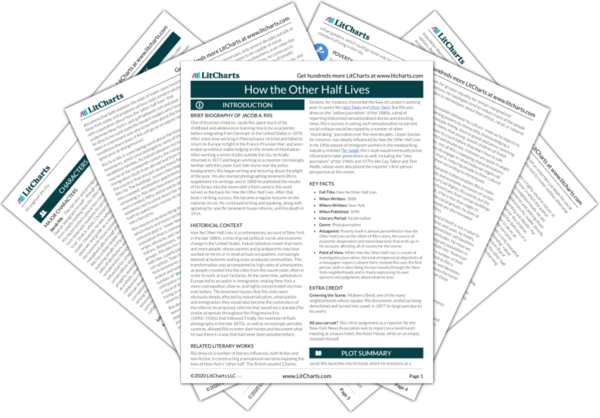Riis cites
Oliver Twist by Charles Dickens (a major influence on his own writing), a novel whose villain, Fagin, makes a profit out of sending young children off to beg and steal for him. The sensational tale that Riis relates here seems, indeed, lifted out of a novel: his point is that the youngest and most vulnerable are easily exploited by the comparatively more powerful.
